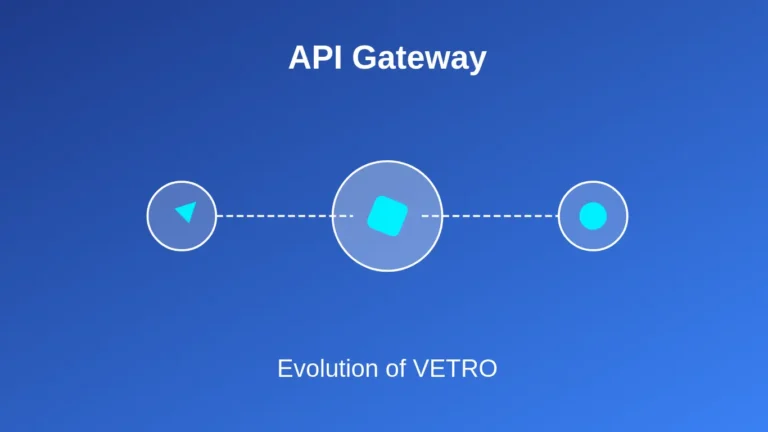In the intricate landscape of digital transformation, API Gateway represents a pivotal technological breakthrough that transcends traditional network management paradigms. The VETRO (Validate, Extract, Transform, Route, Optimize) framework emerges as a revolutionary approach, fundamentally reimagining how organizations conceptualize, design, and implement network infrastructures.
Historical Context of Network Management
To appreciate the significance of API Gateway technology, we must first understand the evolutionary trajectory of network management:
Early Network Architectures
- Monolithic system designs
- Limited scalability
- Manual configuration processes
- Minimal intelligent routing capabilities
Transitional Phases
- Introduction of basic routing protocols
- Emergence of distributed computing models
- Initial abstraction layers
- Limited automation capabilities
Modern Network Paradigms
- Microservices architecture
- Cloud-native infrastructure
- Intelligent, adaptive routing
- Automated scaling mechanisms
VETRO Framework: A Technological Breakthrough
The VETRO framework represents a holistic approach to network management, introducing a systematic methodology for handling complex digital interactions:
- Validate
- Comprehensive authentication mechanisms
- Integrity validation of incoming requests
- Multi-layer security protocols
- Compliance verification
- Extract
- Intelligent data parsing
- Contextual information retrieval
- Metadata analysis
- Semantic understanding of network traffic
- Transform
- Dynamic request modification
- Protocol translation
- Data normalization
- Adaptive transformation algorithms
- Route
- Intelligent traffic distribution
- Optimal path selection
- Load balancing
- Predictive routing strategies
- Optimize
- Performance enhancement
- Resource allocation
- Continuous improvement mechanisms
- Efficiency maximization
Core Components of Modern API Gateway
Modern API Gateways comprise sophisticated technological elements:
Architectural Components
- Request interceptors
- Authentication modules
- Transformation engines
- Routing mechanisms
- Monitoring systems
Advanced Features
- Machine learning integration
- Predictive analytics
- Real-time performance monitoring
- Adaptive configuration management
Technical Architecture Explained
A comprehensive exploration of API Gateway’s architectural design reveals multiple intricate layers:
- Presentation Layer
- User interface
- Request initiation point
- Access management
- Initial authentication
- Middleware Layer
- Request processing
- Transformation logic
- Security enforcement
- Protocol mediation
- Backend Layer
- Service integration
- Resource allocation
- Response generation
- Performance optimization
Implementation Strategies
Successful API Gateway deployment requires meticulous planning and strategic execution:
Preliminary Assessment
- Current infrastructure analysis
- Performance baseline establishment
- Architectural compatibility evaluation
- Scalability requirements identification
Deployment Methodologies
- Incremental implementation
- Parallel testing environments
- Phased rollout strategies
- Continuous integration approaches
Best Practices
- Comprehensive documentation
- Robust testing protocols
- Monitoring frameworks
- Continuous improvement mechanisms
Performance Optimization Techniques
API Gateways leverage advanced optimization strategies:
- Caching Mechanisms
- Intelligent response caching
- Configurable cache policies
- Adaptive cache invalidation
- Performance prediction
- Request Compression
- Bandwidth optimization
- Reduced latency
- Efficient data transmission
- Minimal resource consumption
- Parallel Processing
- Concurrent request handling
- Distributed computing models
- Asynchronous processing
- Non-blocking architectures
Security Considerations
Comprehensive security represents a critical aspect of API Gateway technology:
Authentication Strategies
- Multi-factor authentication
- Token-based access control
- OAuth 2.0 implementation
- OpenID Connect protocols
Threat Mitigation
- Intrusion detection systems
- Rate limiting mechanisms
- Anomaly detection
- Automated threat response
Compliance Frameworks
- GDPR considerations
- HIPAA requirements
- PCI-DSS standards
- Industry-specific regulations
Future Technological Trajectories
Emerging trends in API Gateway technology point towards unprecedented innovation:
- Artificial Intelligence Integration
- Predictive routing algorithms
- Intelligent traffic management
- Automated optimization
- Self-healing networks
- Quantum Computing Potential
- Enhanced encryption
- Complex routing calculations
- Unprecedented computational capabilities
- Advanced network modeling
- Edge Computing Convergence
- Distributed gateway architectures
- Localized processing
- Reduced latency
- Enhanced geographical flexibility
Comparative Analysis
Comparing traditional and modern API Gateway approaches reveals transformative differences:
Traditional Approaches
- Static configuration
- Limited scalability
- Manual intervention requirements
- Reactive management
Modern VETRO-Powered Gateways
- Dynamic configuration
- Infinite scalability
- Autonomous management
- Predictive optimization
Practical Applications
Real-world scenarios demonstrate the versatility of API Gateway technologies:
- E-Commerce Platforms
- Dynamic pricing mechanisms
- Personalized recommendation engines
- Seamless payment integrations
- Global transaction processing
- Healthcare Systems
- Patient data management
- Telemedicine integration
- Compliance enforcement
- Secure information exchange
- Financial Services
- Real-time transaction processing
- Fraud detection systems
- Regulatory compliance
- Multi-channel integration
Challenges and Mitigation Strategies
While transformative, API Gateway implementation presents complex challenges:
Common Challenges
- Complexity of integration
- Performance overhead
- Security vulnerabilities
- Scalability limitations
Mitigation Approaches
- Modular architecture design
- Comprehensive testing frameworks
- Continuous monitoring
- Adaptive configuration management
Conclusion
The evolution of VETRO in API Gateway technology represents a monumental leap in digital infrastructure management. Organizations embracing this innovative approach will unlock unprecedented levels of efficiency, security, and adaptability.
Frequently Asked Questions ( FAQs) About API Gateway is Evolution of VETRO
How does VETRO API Gateway differ from traditional network solutions?
VETRO API Gateway offers intelligent, adaptive routing with advanced optimization techniques, providing comprehensive network management beyond traditional approaches.
What are the primary benefits of implementing an API Gateway?
Benefits include enhanced performance, improved security, scalable infrastructure, intelligent routing, and cost-effective resource utilization.
Is API Gateway suitable for organizations of all sizes?
Modern API Gateway solutions are designed to be scalable, accommodating businesses from startups to large enterprise environments.
Recommended Resources
- Cloud Native Computing Foundation
- IEEE Network Technology Reports
- Advanced API Management Journals
Disclaimer: This article represents current technological insights and is subject to ongoing technological advancements.

